Attending the workshop were Associate Professor Dr. Tong Trung Tin (Chairman of the Vietnam Archaeological Association), Prof. Dr. Vu Minh Giang (Chairman of the Science and Training Council, VNU, Vice Chairman of the National Heritage Council), Mr. Tran Tien Dung (Deputy Director of the Department of Culture and Sports of Quang Ninh province), Mr. Ha Hai Duong (Deputy Secretary of the Town Party Committee, Chairman of the People's Committee of Dong Trieu town), Prof. Dr. Pham Quang Minh (Rector of the University of Social Sciences and Humanities, VNU) along with many experts, researchers in archaeology and history, leaders of departments and branches in Dong Trieu town.
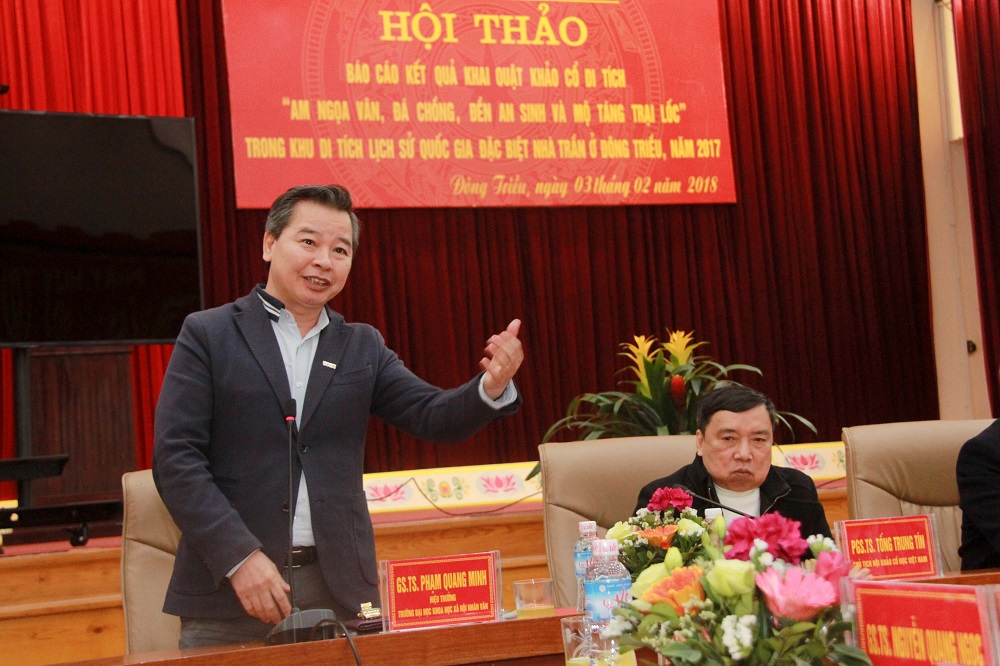
Prof. Dr. Pham Quang Minh speaks at the conference
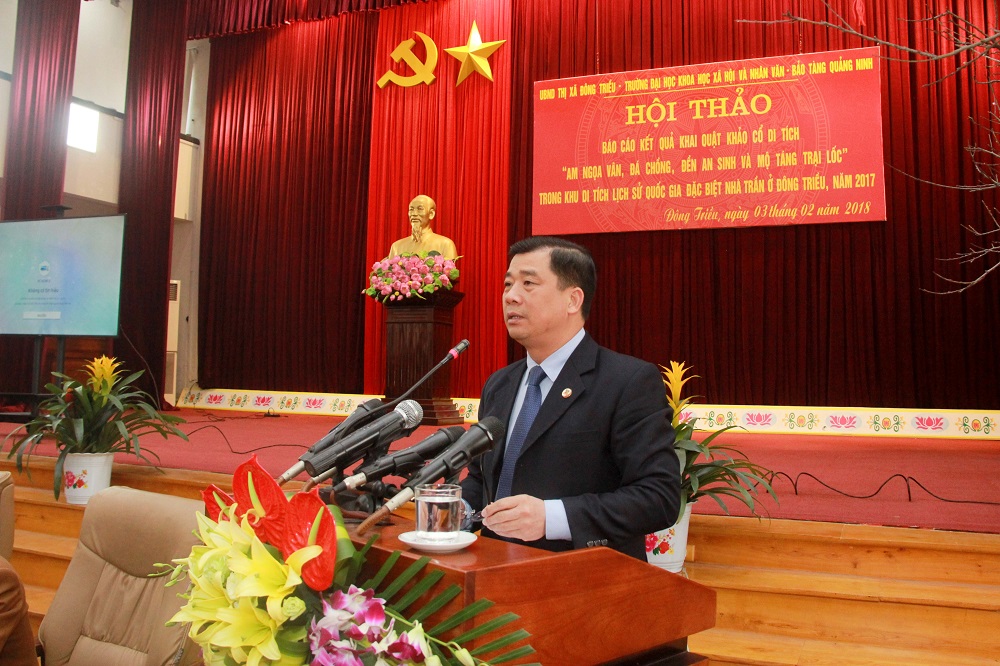
Comrade Ha Hai Duong (Deputy Secretary of the Town Party Committee, Chairman of the People's Committee of Dong Trieu town) spoke at the workshop
An Sinh Temple is an important relic, however, current documents are quite scarce, especially records of An Sinh Palace under the Tran Dynasty. The excavation has helped to discover a complex of Tran Dynasty relics with many architectural layers, reflecting the development process of An Sinh Palace under the Tran Dynasty, thereby determining the divine axis and the direction of Tran Dynasty architecture; at the same time, planning the distribution range and structural scale of a relatively complex complex of architectural works through many different historical periods.
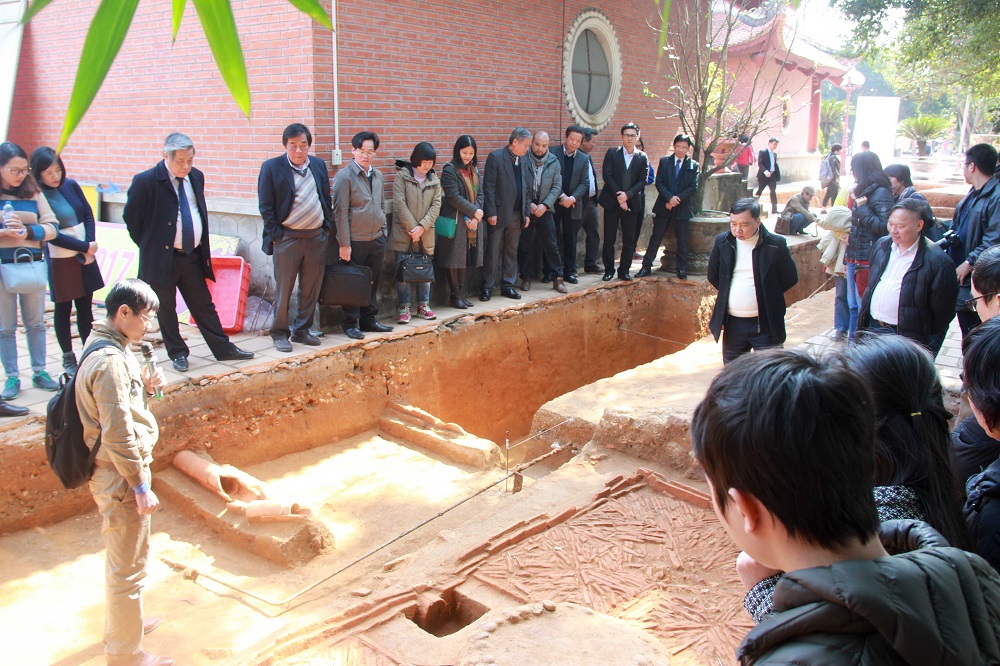
Associate Professor, Dr. Dang Hong Son (Deputy Head of the Faculty of History, University of Social Sciences and Humanities) introduces some archaeological results at An Sinh Temple.
The discovery of brown-patterned ceramics, especially brown-patterned ceramic pots, shows the royal character of the An Sinh palace architecture under the Tran Dynasty, and also reveals information about the construction date of An Sinh under the Tran Dynasty. According to existing documents, the Tran Dynasty architecture in An Sinh was built in the early 13th century. This is an important key to examining the nature of the An Sinh palace architectural complex. The excavation results also yielded a number of particularly valuable relics such as bronze phoenix statues, large brown-patterned ceramic pots decorated with lotus flowers and dragons.
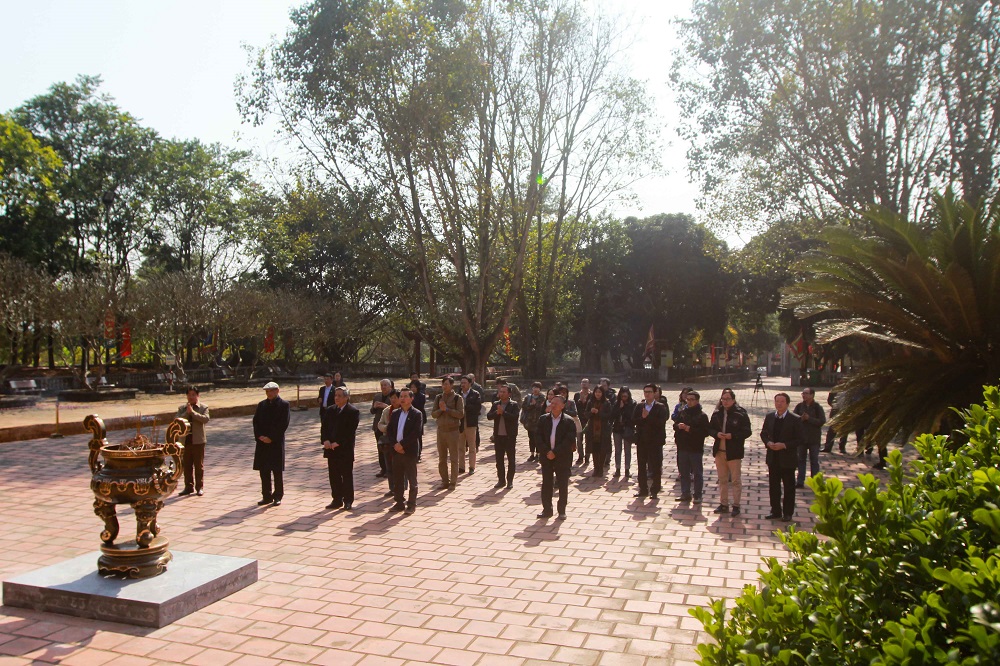
The conference delegation offered incense at Thai Mieu and An Sinh Temple before attending the conference.
Trai Loc burial site has two tombs discovered close to each other. During the road construction process, although they were severely damaged by excavators, through survey, the excavation team believes that the structure of the tomb is similar to Nghia Hung tomb (which appeared in Dong Trieu in 2010), Phan Cuu (Tam Duong, Thai Binh) and Hai Trieu tomb (Hung Ha, Thai Binh). All are tombs of Tran dynasty nobles in their ancestral lands.
Ngoa Van Hermitage - the place where the first patriarch of the Truc Lam Zen sect practiced and became Buddha - is a complex of pagodas and towers with 15 relics divided into 4 clusters, of which Ngoa Van Hermitage is the most important relic. This complex of pagodas and towers was built and continuously expanded until the Nguyen Dynasty in the 19th century.
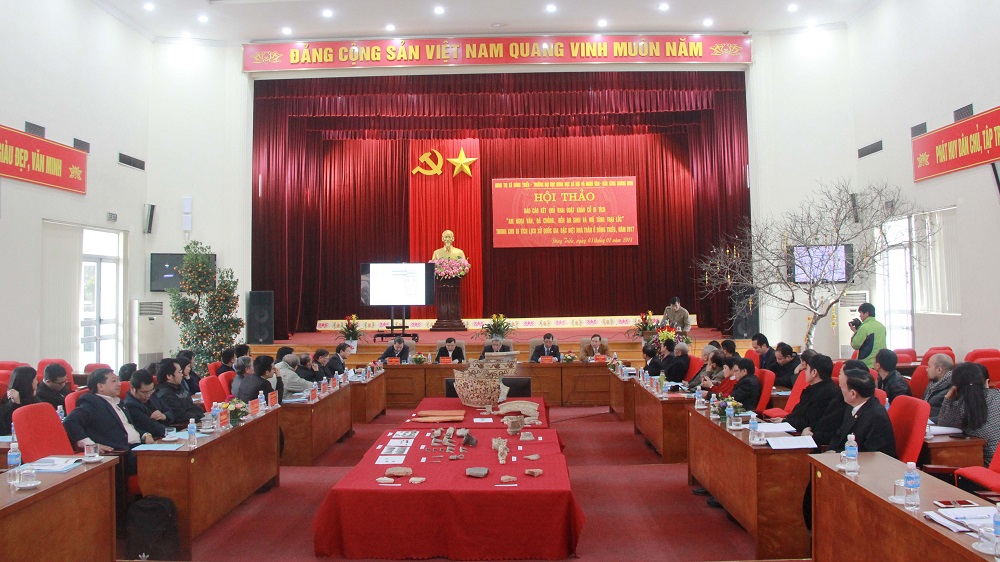
Overview of the workshop
The team conducted excavations at the top of the mountain - the chessboard, the hermitage - tower area below. According to the team's preliminary assessment, during the Tran Dynasty, the ground level of the Ngoa Van Hermitage area only had one foundation level with a scale equivalent to the current Tam Bao area. Here, the architectural works of the Tran Dynasty had a wooden frame structure, roofed with lotus-shaped tiles; the scale of these structures was not large, demonstrating the true spirit of Zen Buddhism which is to be in harmony with nature, not with it.
Basically, the current ground structure with two levels of foundation was formed under the Later Le Dynasty and has been maintained until now. During the Nguyen Dynasty, the ground structure basically did not change, construction activities seemed to only take place at the upper foundation level. After being restored or rebuilt, the Nguyen Dynasty architecture seemed to still maintain the structure and specifications of the previous Later Le Dynasty. By the 20th century, most of the relics at Ngoa Van collapsed, so all the worship content that existed or did not exist at Ngoa Van were gathered in the Ngoa Van hermitage area.
The Da Chong relic site is a flat, spacious area with all the favorable factors for human habitation. Archaeological investigations here show that Da Chong 1 has traces of structures: Tinh That, central area, tower garden, pagoda garden, lake; Da Chong 2 has traces of architectural structures and architectural material kilns. The results of archaeological research in 2017 show that, it seems that under the Tran Dynasty, in the tower garden area, there were small hermitages built here. Under the Later Le Dynasty, when Ngoa Van was restored and embellished, Da Chong was built and developed into a large and most complete pagoda and tower complex among the pagoda and tower architectural clusters in Ngoa Van.
Based on the results of archaeological excavations, the delegation made specific recommendations for the relics: the detailed planning of the An Sinh temple needs to be adjusted in accordance with the results of archaeological research, and at the same time connected with the Tu Phuc tomb relic, maximizing the diversity of terrain and natural landscape, turning this into a historical and cultural park. For the Trai Loc tomb relic, it is necessary to restore the tomb site; adjust the route when passing through the relic, delimit the area, and at the same time have a plan to protect and promote the values of the relic in the long term. In addition, scientists need to conduct a general investigation of the area around Thai Lang to search for traces of similar relics and make a plan to protect the relics if any.
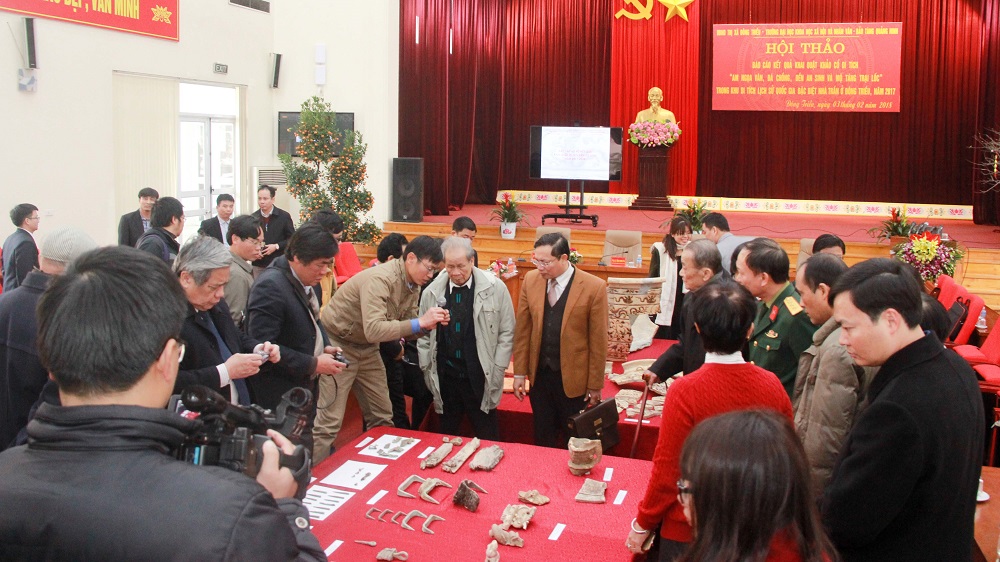
Delegates are listening to an introduction to some discovered relics.
The planning of the Ngoa Van Am relic site needs to preserve the existing ground structure and landscape; connect the whole with Ngoa Van Pagoda and Tinh Am to form a whole: Pagoda, hermitage - tower and hermitage. There needs to be a timely plan to preserve Doan Nghiem and Phat Hoang tower, two important architectural works still remaining at the relic site.
For the Da Chong relic, the delegation proposed to restore and embellish this architectural complex according to the structure and scale of the Le Trung Hung period discovered, thereby meeting the requirements of function, architectural landscape and high feasibility. At the same time, the planning orientation is divided into two sub-zones with the core area being the spiritual cultural architecture and the landscape exploitation area, service development, building Da Chong into a center of belief, religion and spiritual tourism. The lake needs to be renovated to both create a landscape and be a place to store clean water for daily life of the entire Ngoa Van relic complex...
At the workshop, scientists and delegates also contributed many opinions on the planning of zoning for relic protection, plans for preserving and embellishing relics... To deploy and implement the planning, restoration, embellishment and promotion of the value of Tran Dynasty relics, it is important to study the structure, scale and determine the value. The results of archaeological excavations have confirmed the value of Tran Dynasty relics, thereby providing scientific arguments for planning, proposing plans for preserving, restoring, embellishing and promoting the value of the relics.
Author:Hoai An
Newer news
Older news